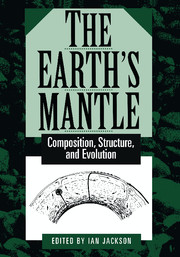Book contents
- Frontmatter
- Contents
- Chapter Outlines
- Contributors
- Dedication
- Preface
- I Accretion and Differentiation of the Earth
- II Dynamics and Evolution of the Earth's Mantle
- 4 Understanding Mantle Dynamics through Mathematical Models and Laboratory Experiments
- 5 Plates, Plumes, Mantle Convection, and Mantle Evolution
- 6 The Mantle's Chemical Structure: Insights from the Melting Products of Mantle Plumes
- 7 Pyrolite: A Ringwood Concept and Its Current Expression
- III Structure and Mechanical Behaviour of the Modern Mantle
- Index
5 - Plates, Plumes, Mantle Convection, and Mantle Evolution
Published online by Cambridge University Press: 23 November 2009
- Frontmatter
- Contents
- Chapter Outlines
- Contributors
- Dedication
- Preface
- I Accretion and Differentiation of the Earth
- II Dynamics and Evolution of the Earth's Mantle
- 4 Understanding Mantle Dynamics through Mathematical Models and Laboratory Experiments
- 5 Plates, Plumes, Mantle Convection, and Mantle Evolution
- 6 The Mantle's Chemical Structure: Insights from the Melting Products of Mantle Plumes
- 7 Pyrolite: A Ringwood Concept and Its Current Expression
- III Structure and Mechanical Behaviour of the Modern Mantle
- Index
Summary
Introduction
The major features of mantle convection can be deduced fairly directly from well-established observations and straightforward physics. The picture that emerges is that the tectonic plates are the dominant active component, whereas mantle plumes are an important secondary component. The plates comprise the cool, upper thermal boundary layer of the convecting mantle, and the cycle of creation, cooling, subduction, and reheating of plates is the dominant means by which heat is removed from the Earth's interior. Plumes arise mainly from a hot thermal boundary layer that is probably located at the base of the mantle, and they transport about 10% of the Earth's heat budget through the mantle to the base of the lithosphere. Only a small fraction of this plume heat escapes to the surface.
There are strong arguments against the mantle transition zone being a substantial long-term barrier to flow; in other words, the mantle convects as a single layer, to a good approximation. However, it seems to be close to a state in which phase-transformation effects and chemical-buoyancy effects in the transition zone would separate mantle convection into two layers, and this may have been the case in the past, either episodically or continuously. At present, some plates and plumes may not penetrate the transition zone immediately, but virtually all probably do on a timescale of the order of 108 years.
The plates are an integral part of mantle convection, being the main driving thermal boundary layer.
- Type
- Chapter
- Information
- The Earth's MantleComposition, Structure, and Evolution, pp. 228 - 258Publisher: Cambridge University PressPrint publication year: 1998
- 3
- Cited by



